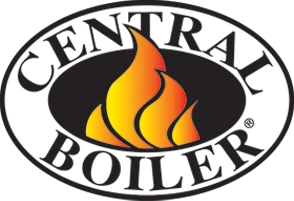Introduction
Discover the critical role of the water heater pressure relief valve in ensuring your home’s safety and how to maintain it properly. Being a homeowner means understanding the importance of safety features in your home. The water heater pressure relief valve is essential in protecting against high water pressure and keeping your family and home safe. Learning about this vital component is crucial for maintaining a secure and efficient household.
At Elite Mechanical, we emphasize the significance of the water heater pressure relief valve for home safety. Knowing that your water heater is safe provides peace of mind, ensuring the well-being of your loved ones.
Understanding the Role of a Water Heater Pressure Relief Valve
The water heater pressure relief valve plays a vital role in maintaining the safety and efficiency of your water heater. It ensures that the tank’s pressure remains at a safe level, preventing dangerous situations and prolonging the lifespan of the water heater.
Importance of Relief Valve in Water Heater
The relief valve in your water heater is a crucial safety feature. It releases water if the pressure or temperature inside the tank becomes too high, preventing potential explosions. Regularly checking the valve ensures it functions correctly when needed, protecting both your water heater and home.
How Does the Pressure Relief Valve Work?
The pressure relief valve works by opening when the pressure inside the water heater exceeds a safe level. This release prevents the risk of an explosion, making the valve a key safety component. Understanding how it operates highlights its importance in your water heater system.
Common Issues with Relief Valves in Water Heaters
Relief valves in water heaters can encounter problems such as leaks, blockages, or failure due to dirt or damage. Identifying these issues early can prevent significant problems, so regular inspection and maintenance are essential for a safe and functional water heater.
Maintaining Your Water Heater Pressure Relief Valve
Proper maintenance of your water heater pressure relief valve is crucial for the safety and longevity of your water heater. Regular checks and timely replacements ensure that your valve operates effectively, preventing potential hazards.
How to Test Water Heater Relief Valve
Testing your water heater’s relief valve is simple. Lift the lever slightly and watch for water discharge. If water flows out and the lever snaps back, the valve is functioning correctly. If not, the valve may need cleaning or replacement.
Step-by-Step Guide for Maintaining Water Heater Pressure Relief Valve
To maintain your water heater’s safety valve, follow these steps:
- Turn Off the Power: Ensure the water heater is off before starting.
- Test the Valve: Lift the lever to release some water and check for proper operation.
- Inspect for Damage: Look for signs of leaks, rust, or damage.
- Replace if Necessary: If the valve shows any signs of malfunction, replace it with one of the same size and rating.
When to Replace Water Heater Pressure Relief Valve
Replace your safety valve every three to five years or if you notice any signs of malfunction, such as leaking or rust. Regular replacement ensures your home remains safe and your water heater operates efficiently.
Troubleshooting Water Heater Relief Valve Issues
If your relief valve is experiencing issues, start by inspecting it for visible damage or leaks. Ensure the pressure setting is correct. If problems persist, seek professional assistance to avoid further complications and ensure the safe operation of your water heater.
Conclusion
The water heater pressure relief valve is an essential safety feature. Regular maintenance and timely replacement of this valve are crucial for preventing dangerous situations and ensuring the efficient operation of your water heater. As a homeowner, understanding and caring for this component is key to maintaining a safe home.
With the help of Elite Mechanical, you can ensure that your water heater remains safe and functional. Regular inspections and professional assistance will keep your system in top condition, providing peace of mind and safety for your household.
FAQ
What is the purpose of a water heater pressure relief valve?
The water heater pressure relief valve prevents the tank from becoming over-pressurized. It releases excess pressure safely, protecting your home from potential accidents.
How does the pressure relief valve work in a water heater?
Equipped with a lever, the valve opens under high pressure, releasing water or steam when the tank becomes over-pressurized. This action lowers the pressure inside, ensuring safety.
What are some common issues with pressure relief valves in water heaters?
Common issues include leaks, blockages, or failure to open due to mineral buildup. Signs such as water leaking or no water flow from the valve indicate problems that need attention.
How often should I test my water heater relief valve?
Test the valve once a year to ensure it functions correctly. If it fails the test, contact a professional for further inspection and repair.
What steps are involved in maintaining a water heater pressure relief valve?
Maintenance includes lifting the valve’s lever to check for water discharge, replacing the valve every three to five years, and inspecting for signs of leaks or rust.
How do I know when it’s time to replace my relief valve?
Replace the valve if you notice leaks, rust, or failure during testing. Regular replacement every three to five years enhances safety and performance.
What should I do if I’m experiencing issues with my water heater relief valve?
Inspect for visible issues and ensure the valve’s pressure setting is correct. If problems persist, seek professional assistance. Elite Mechanical can help with all your water heater needs.
By following these guidelines, you can ensure that your water heater pressure relief valve remains functional and effective, providing essential safety for your home.









